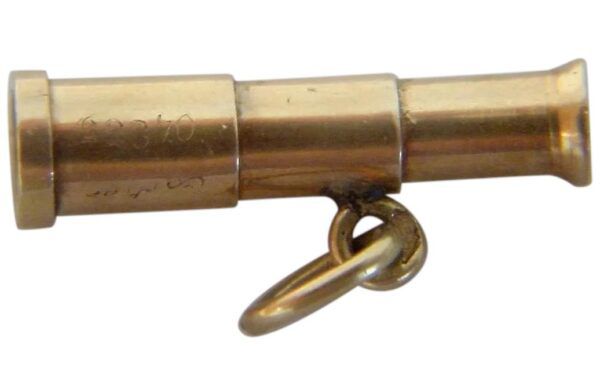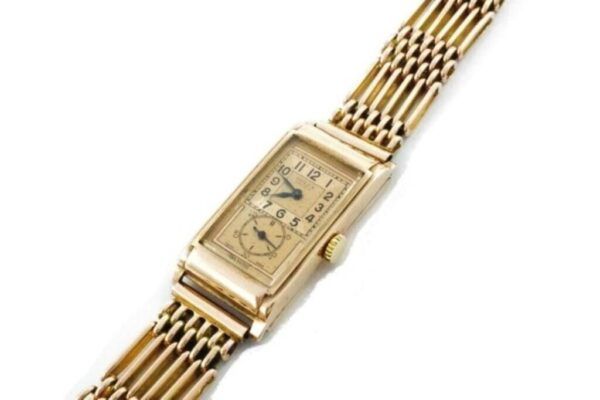#Peek #Stanhopes #Jewelry #WorthPoint
During my many decades of collecting jewelry, I have come across only a few Stanhopes. Finding one of these little viewers in an accessory feels like discovering a hidden treasure. I found one recently, in fact, when I bought a piece of 1960s costume jewelry to use for a magazine photo shoot. I didn’t expect this jewelry item to feature a Stanhope, as most I’ve seen are decidedly older than that.
Before I get into the details about some of the jewelry featuring Stanhopes— including my surprise piece—let’s cover a few basics to fully understand why these little treasures straddling the histories of magnification, photography, and adornment are so intriguing.
The Stanhope and How It Works
In essence, a Stanhope is a little peep show of sorts, but the images aren’t always naughty. You hold an object toward a light source, peer through a tiny viewer, and see an image hidden within. The type of lens residing in these little viewers is a Codding Magnifier, invented by Sir David Brewster. They’re called “Stanhopes” for Lord Charles Stanhope, who created the Stanhope Lens. I suppose if they’d been correctly identified long ago, we’d call them Brewsters. That wasn’t to be, though, since some confusion occurred when a Stanhope Lens was used with a daguerreotype camera in the 1830s to make the first microphotographs.
One French photographer, René Dagron, took the process even further when he attached this type of tiny photo to an equally small convex lens to view the images in miniature. These little viewers, dubbed Stanhopes, were widely built into novelty items made during the mid-to-late 1800s, including sewing implements, tape measurers, knives, and writing instruments. They were also built into many jewelry items.
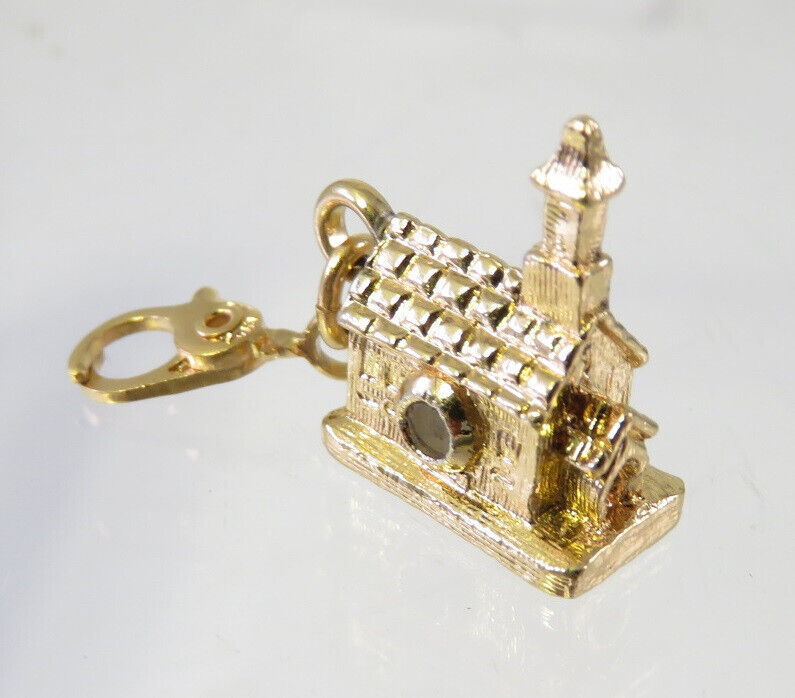
Stanhopes were sometimes sold as souvenirs during expositions or in gift shops adjacent to tourist attractions. Some were even distributed with advertising on them. And, yes, some examples contain racy images of scantily clad women. However, many more depict historic scenes, vacation spots, prayers, and fully clothed people since they could be custom-ordered to feature the apple of one’s eye or contain photos of historical figures, actresses, or even a poet.
Jewelry Containing Stanhopes
Now that you know more about these little viewers, I’ll return to my Stanhope surprise found in 1960s jewelry. As a lover of charm bracelets, I’ve understood Stanhopes were fitted into many, many charms throughout the 20th century and fobs even before then. What I didn’t know, however, is that Monet made Stanhope charms in the late 1960s and early 1970s. The one I came across on a charm bracelet was a silver-plated example in the shape of a chapel—a typical form for Stanhope charms containing a photo of the Lord’s Prayer. After doing a little more research, I discovered that Monet made other versions during the era, including a small camera with an image of an American flag in the viewer.
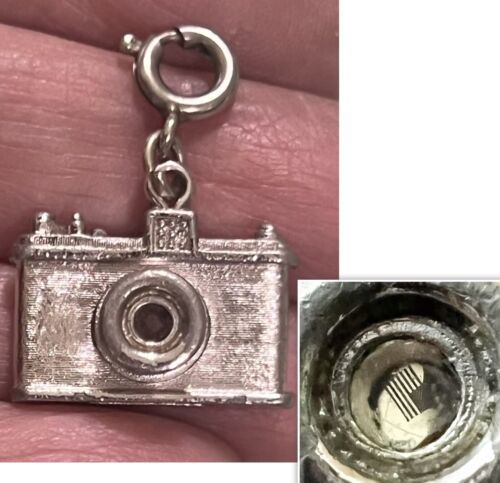
Gold Jewelry Items
And while that was a super fun discovery for me as a jewelry enthusiast, going down the rabbit hole and looking at all the different types of Stanhopes hidden in other jewelry was even more entertaining. For instance, I had no idea Cartier produced an 18-karat gold Stanhope spyglass charm featuring twelve little images of Paris. How cool is that? However, you must be prepared to spend thousands to snag one of these.
American jewelry companies marketed Stanhope charms crafted from karat gold as well. Walter Lampl, a well-known purveyor of charms from the 1930s through the ’50s, often used Stanhopes in his designs. One example is a small record player with a lid and doors that swing open and close. Other gold Stanhope charms aren’t marked to indicate the company responsible for them. These can include monuments like the Lincoln Memorial and churches like St. Patrick’s Cathedral. Low-karat gold charms from England, usually marked 9-karat, can feature tiny crowns that display a view of Queen Elizabeth.
Silver Jewelry Items
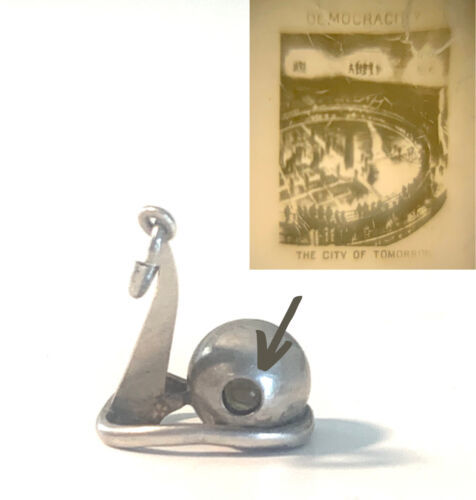
Gold charms are some of the costliest, but some sterling silver examples can sell in the hundreds, too. If you’re into art deco, you might like a sterling silver charm shaped like the Trylon and Perisphere from the 1939 World’s Fair held in New York with “The City of Tomorrow” shown inside. Most silver Stanhope charms are more reasonably priced.
Antique Stanhope Jewelry
Older Stanhope jewelry is also very attractive to collectors. What can you look for dating before 1900? How about a karat gold Stanhope ring from the 1893 World’s Columbian Exposition, showing a photo of the event inside a tiny cannon? Some interesting agate-embellished stickpins from the United Kingdom also have the bonus of showing Victorian ladies within them. Other stickpins, hatpins, brooches, and watch fobs have tiny natural stone barrels showing Niagara Falls inside the viewer.
Religious Stanhope Designs
Religious jewelry is also a popular Stanhope form—from crosses displaying the Seven Sorrows of Mary to nativity scenes or viewers with the Lord’s Prayer inside all those little church, cathedral, and chapel charms. Most of these items have been crafted from gold, silver, plated metals, and plastics. Some are even embellished with rhinestones.
So, if you tend to be drawn to jewelry from the 1950s and ’60s like me or prefer older pieces from the 1800s, there’s a Stanhope sure to please. With a little shopping effort, you can discover a little prize fitting every taste and budget.
Pamela Siegel is a freelance writer and author who has been educating collectors for more than two decades. In addition to three books on topics relating to antiques and collectibles, she frequently shares her expertise through online writing and articles for print-based publications. Pamela is also the co-founder of Costume Jewelry Collectors Int’l (CJCI) and the proprietor of Chic Antiques by Pamela.
WorthPoint—Discover. Value. Preserve.

